Best triathlon shoes: ridden and rated
The best triathlon shoes will speed you through transition and ensure that you are comfortable and efficient on the bike
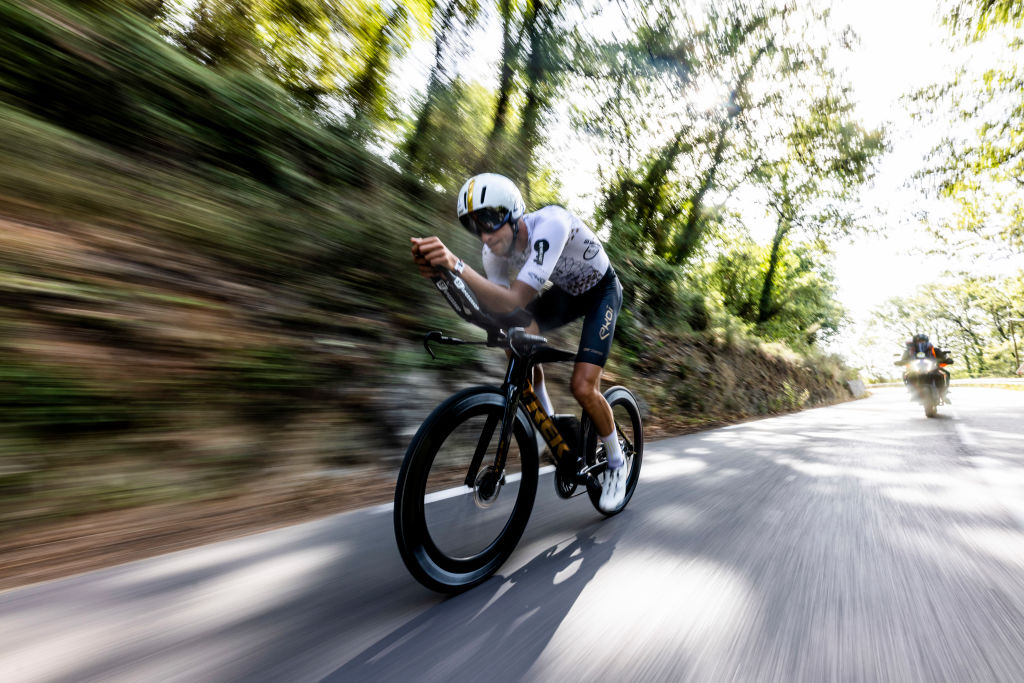
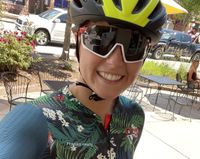
Best triathlon shoes
Whereas road cycling shoes have a fairly simple job to do - transfer power as efficiently as possible whilst also being comfortable, triathlon shoes throw a couple of other requirements into the mix too.
The transitions between disciplines can be crucial time-wise, so tri shoes have to be very quick and easy to put on, with many athletes opting to have the shoes pre-clipped into the pedals and donning them on the move. The shoes must also be sufficiently well vented and quick drying to drain out any excess water after the swim as well as comfy enough to be worn without socks - all whilst still transferring power as efficiently as possible.
As you will spend more time on the bike leg than you will on the run or the swim, it is well worth optimising your shoes for speed through the transition as well as speed on the road. Read on for our pick of the best triathlon shoes.
The quick list
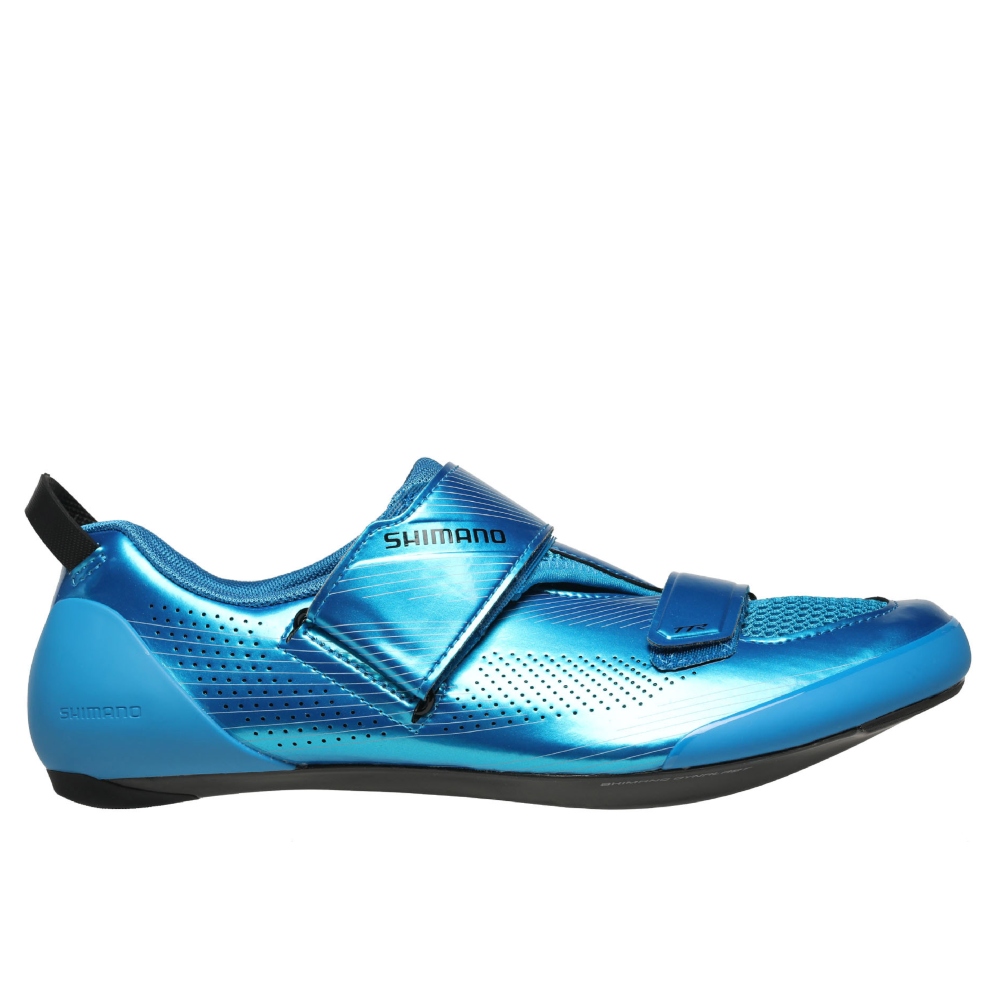
Best overall
Smooth power delivery and a soft upper make the Shimano TR901 a joy to ride in. A large heel pull tab and Velcro straps ensure transitions are rapid but some riders might want to replace the supplied insoles for something with a bit more substance.
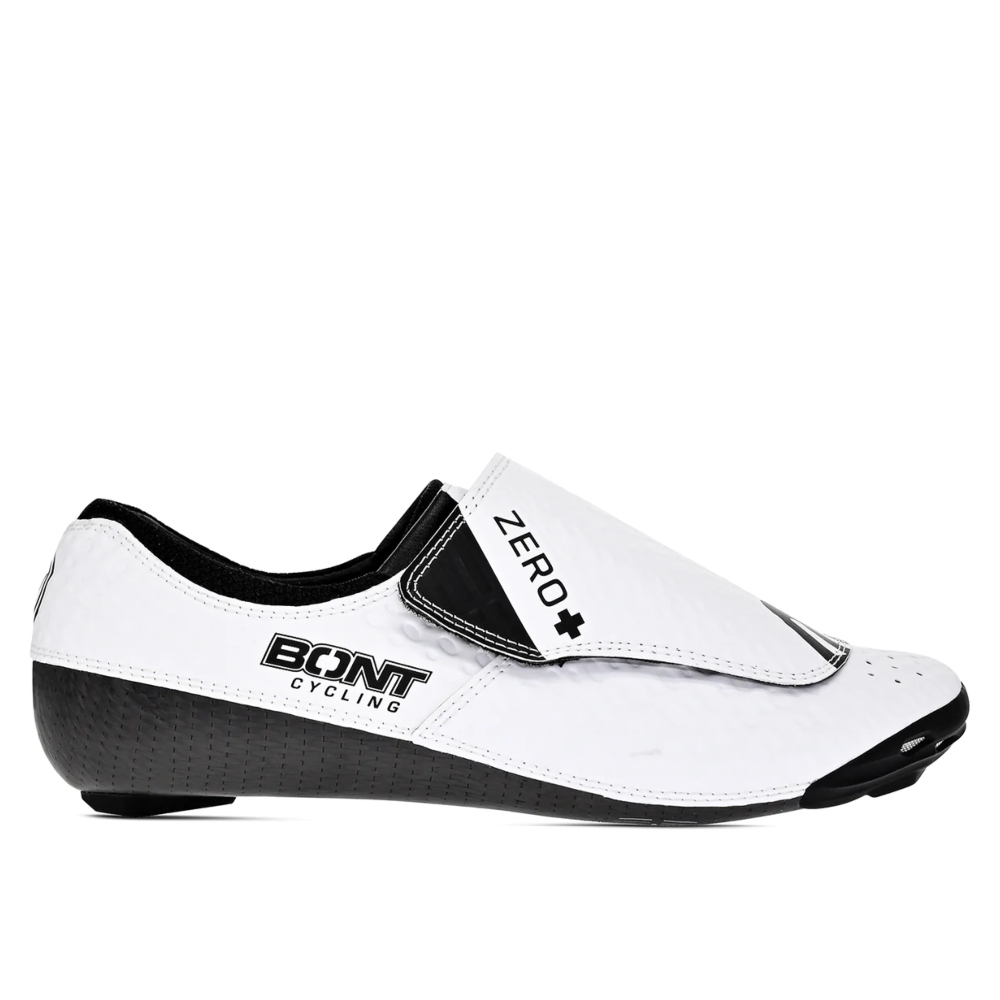
Best heat moldable
Bont's fastidious approach to fit and the potential to heat mold the Zero+ should ensure that it is possible to get a supremely comfortable pair of shoes. From a triathlon point of view though, athletes will bemoan the lack of heel tab and the shoe's limited drainage.
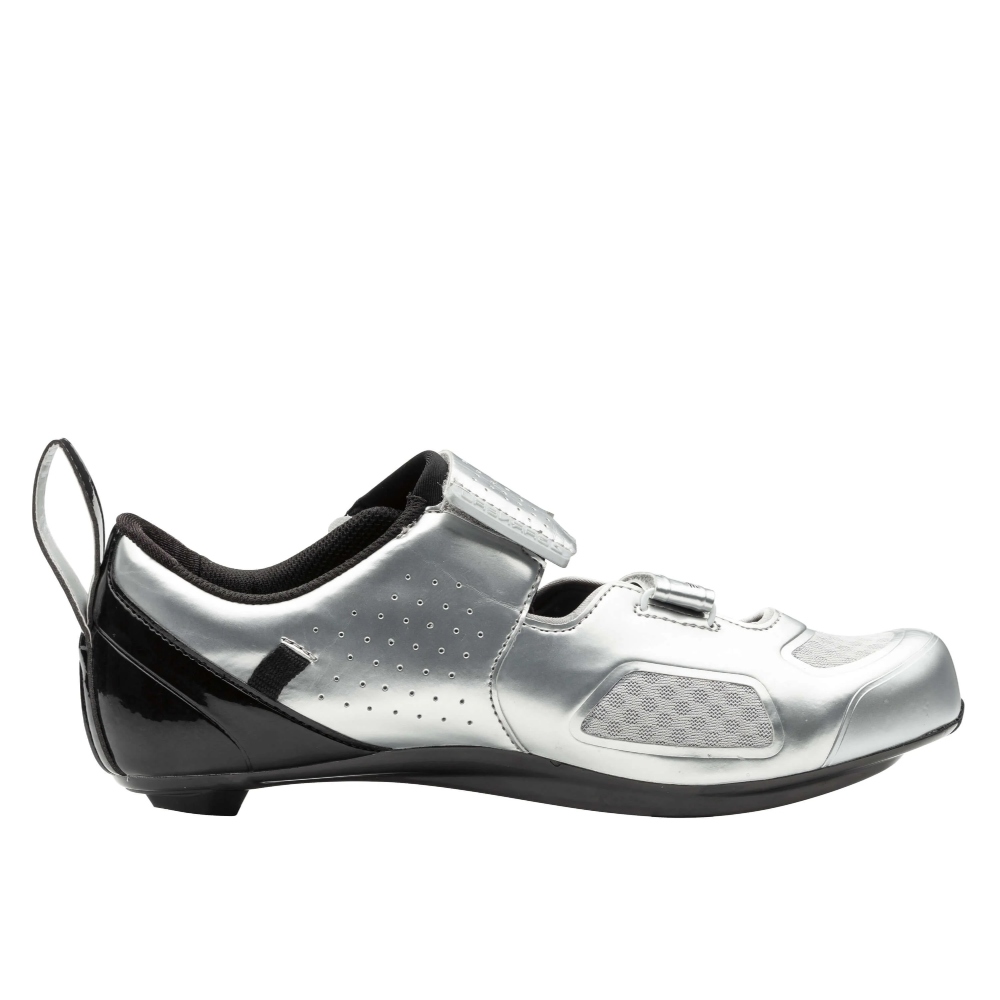
Best ventilation
The open, highly ventilated design of the Tri X-Lite III shoes allows them to drain and dry extremely quickly. They are also easy to put on, but sizing is a little small and don't wear them on a cold day.
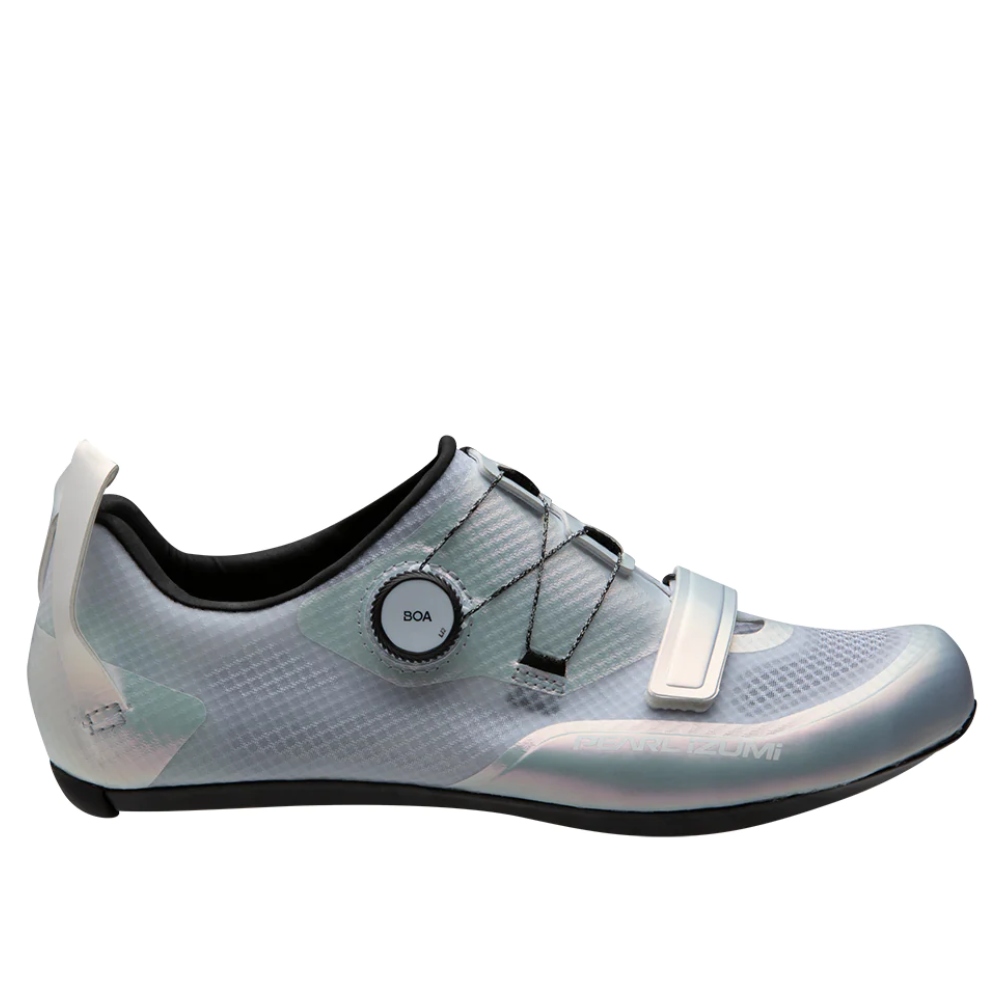
Best for width
Pearl Izumi's Tri Fly Pro benefits from a wider toe box than many shoes for greater comfort, but still has good heel retention to hold the foot securely. The Boa fastening isn't the easiest to use in transition, although ventilation is more than adequate.
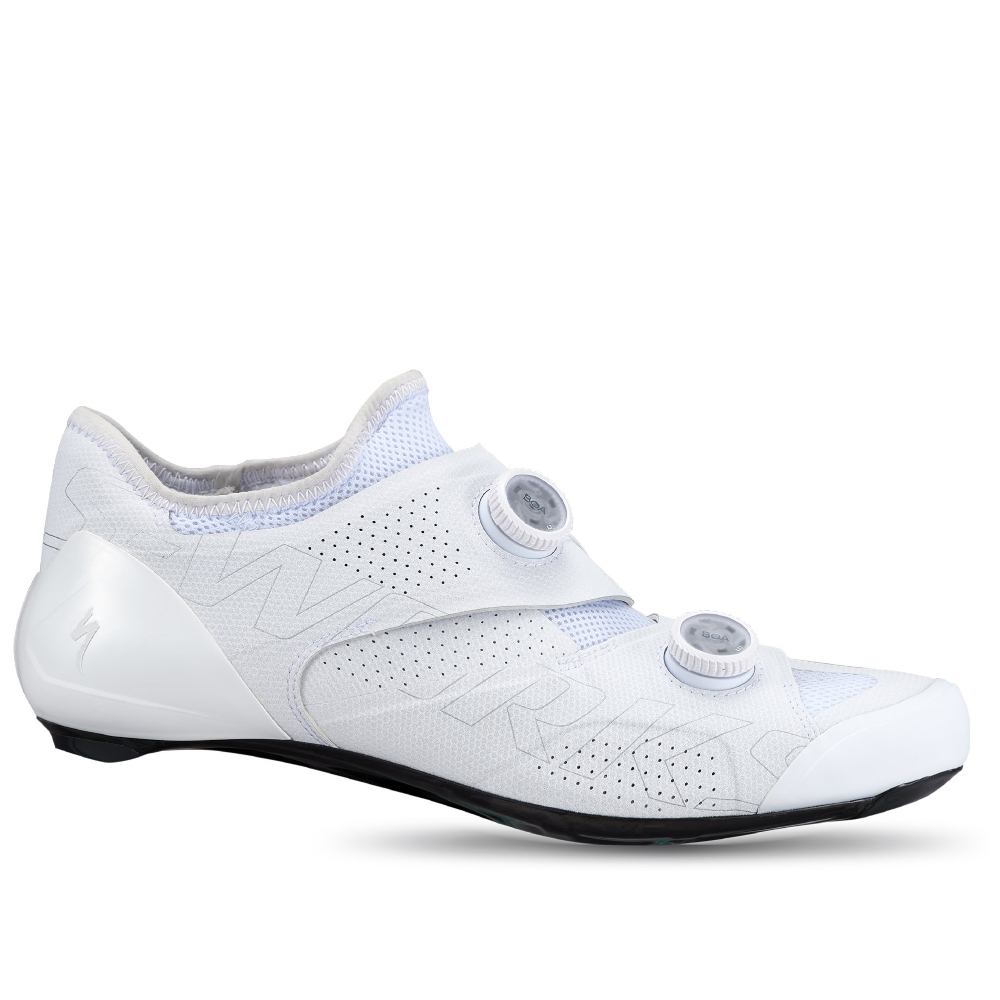
Best for power
Whilst the Ares is a brilliant road shoe, it can't compete with the purpose-built triathlon shoes. When on the bike it is great, with excellent stiffness for power transfer, but transitions are always going to take longer than with a tri shoe and ventilation is also comparatively limited.
The best triathlon shoes
Best overall
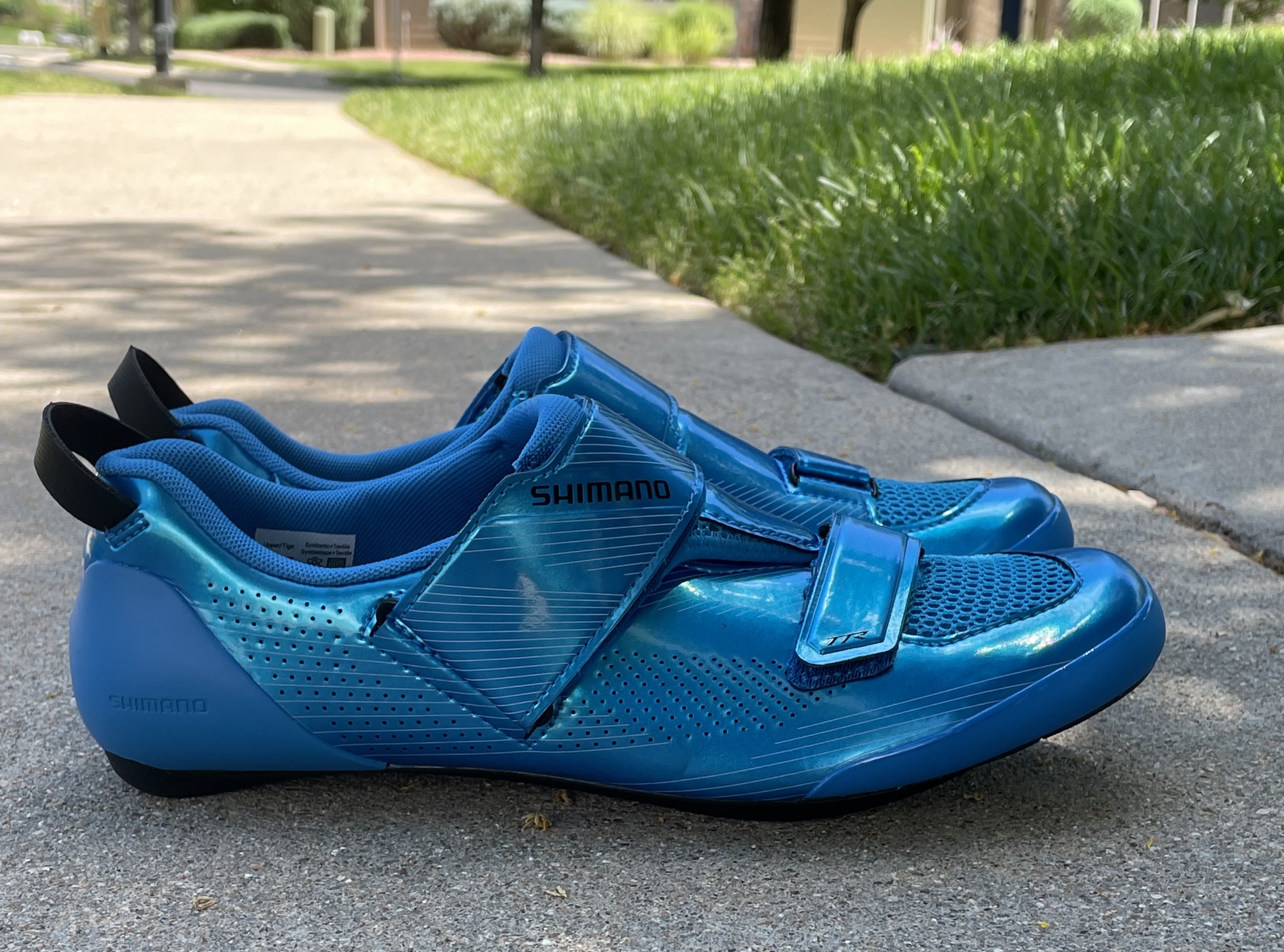
Shimano TR901 triathlon shoes
Shimano TR901
Our expert review:
Specifications
Reasons to buy
Reasons to avoid
The Shimano TR901 are a descendant of the classic Shimano TR9 tri shoes from years ago.
The TR901 features Shimano’s proprietary Dynalast. Dynalast optimizes the toe-spring section of the shoe and promotes a “smoother, more energy-efficient” upstroke, according to Shimano. We definitely noticed the Dynalast in this pair as the shoes are extremely responsive and almost springy from the power phase to the upstroke.
The TR901 also features a classic triathlon build for a shoe, including two Velcro straps per shoe and synthetic heel loops at the back to optimize bike mounting. This is the shoe choice of five-time Ironman World Champion Daniela Ryf, and we can see why.
However, we found that the insoles that come with the shoes are thin and are best replaced by aftermarket or custom insoles. Plus, to no one’s surprise, the shoes are also best used with Shimano pedals for maximum optimization of your triathlon bike setup.
Best heat moldable
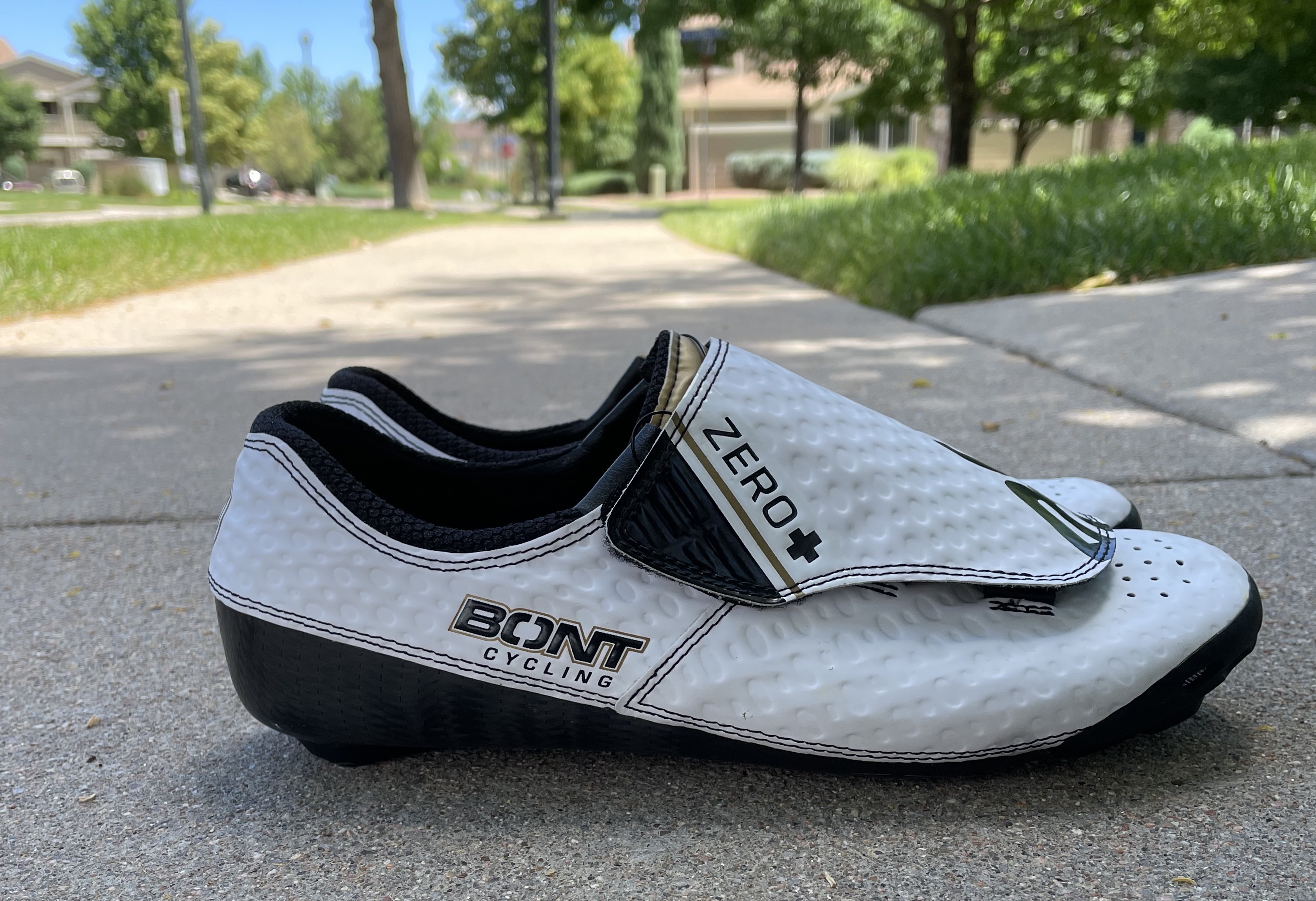
Bont Zero+ triathlon shoes
Bont Zero+
Our expert review:
Specifications
Reasons to buy
Reasons to avoid
The Bont Zero+ has quickly become a favorite of numerous pro triathletes (including Jan Frodeno, Lionel Sanders, and Mirinda Carfrae) in recent years.
The Bont Zero+ Research and Development Team took the construction of this shoe very seriously - they scanned 20,000 human feet to create the basis for this shoe. From the golf ball-esque aerodynamic texture of the shoe’s upper to the carbon chassis, the shoe exudes luxury.
Outside of the 19 sizes, narrow, wide, and standard width options, the Bont Zero+ can be heat-molded at home to meet an individual’s unique foot shape, arch height, and width. The shoe can be molded as many times as needed as the cyclist’s anatomical journey evolves.
The sole is quite stiff and offers great power transfer. The heel cup isn’t the tightest that we tried, but it wasn’t necessarily lacking either, especially if one opts to do the at-home heat molding for a snugger fit.
The biggest drawbacks from a triathlon perspective are, firstly, the lack of sole-based vents and ventilation in general; the shoe has some ventilation on the top but none on the sole. For some, this could cause major blistering and discomfort.
Secondly, the shoe lacks any heel loops to make mounting easier. It’s possible to clip in the shoes and let them dangle, but practising mounting with such a configuration would be a “must-do” before attempting to execute this in a race.
Best ventilation
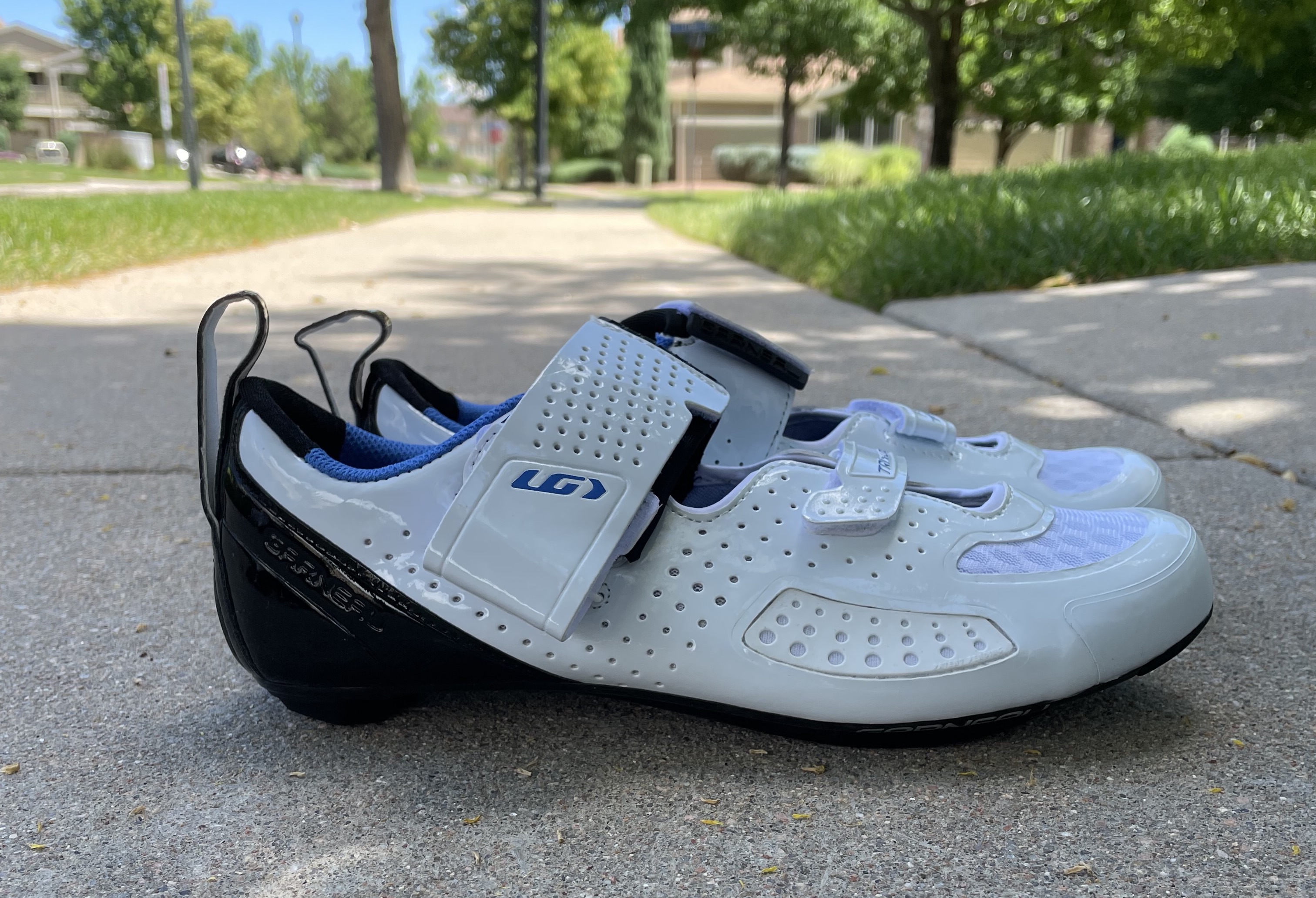
Garneau Tri X-Lite III triathlon shoes
Garneau Tri X-Lite III
Our expert review:
Specifications
Reasons to buy
Reasons to avoid
This was one of the more affordable tri shoes we tested, and it held up to shoes twice its price, for the most part.
The shoe reveals its lower price point via its intense use of plastic in the upper. While the plastic is internally covered with a mesh so as not to rub bare feet the wrong way, the upper is very stiff and took some time to soften over the miles of test usage.
We found the heel cup to be secure - it held the foot well, but the insoles were extremely thin. Riders may want to look at aftermarket or third-party insoles or inserts to maximize their comfort, especially during long races or rides.
Best for width
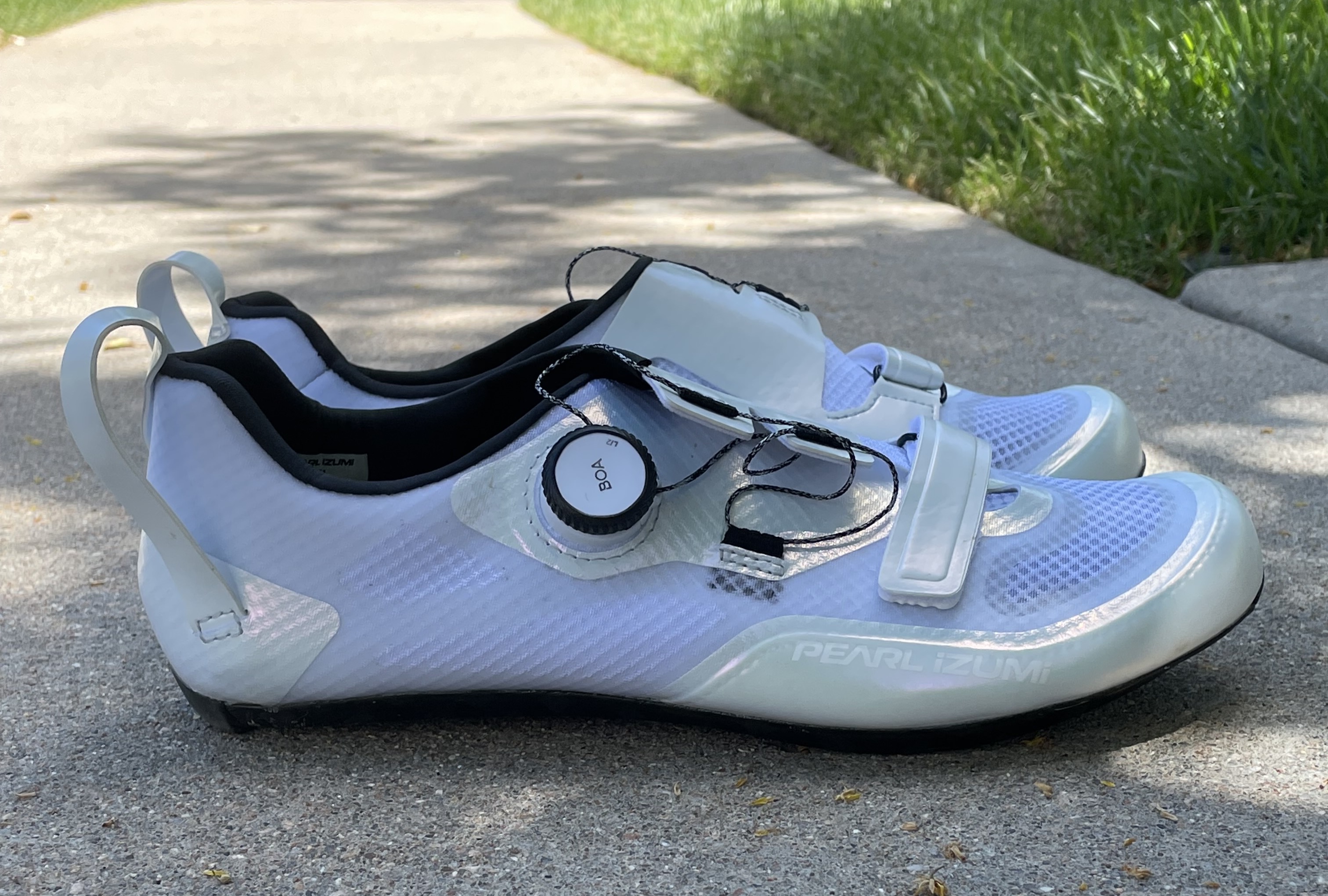
Pearl Izumi Tri Fly Pro triathlon shoes
Pearl Izumi Tri Fly Pro
Our expert review:
Specifications
Reasons to buy
Reasons to avoid
The Pearl Izumi Tri Fly Pro is laden with features that would make any triathlete salivate: a tight (but not too tight) heel cup, a wide toe box, solid insoles, and three vents on the sole for maximum water drainage.
This depends on personal preference, but we found the Boa fastening system to be a bit cumbersome on this shoe. It took numerous turns of the Boa hub to get the shoes adequately tightened, which could eat into time better spent settling into the bike leg post-swim.
While most of the upper is a soft mesh, the Boa system’s cables rest on a plastic piece which sits directly atop the foot. If the Boa system is over-tightened, the plastic can start to dig into the foot, creating numbness and even chafing.
The shoes offered great power transfer, especially when climbing, and seemed to get the geometry of a tight heel cup and wide toe box just right, which was ace over long, hilly rides.
Best for power
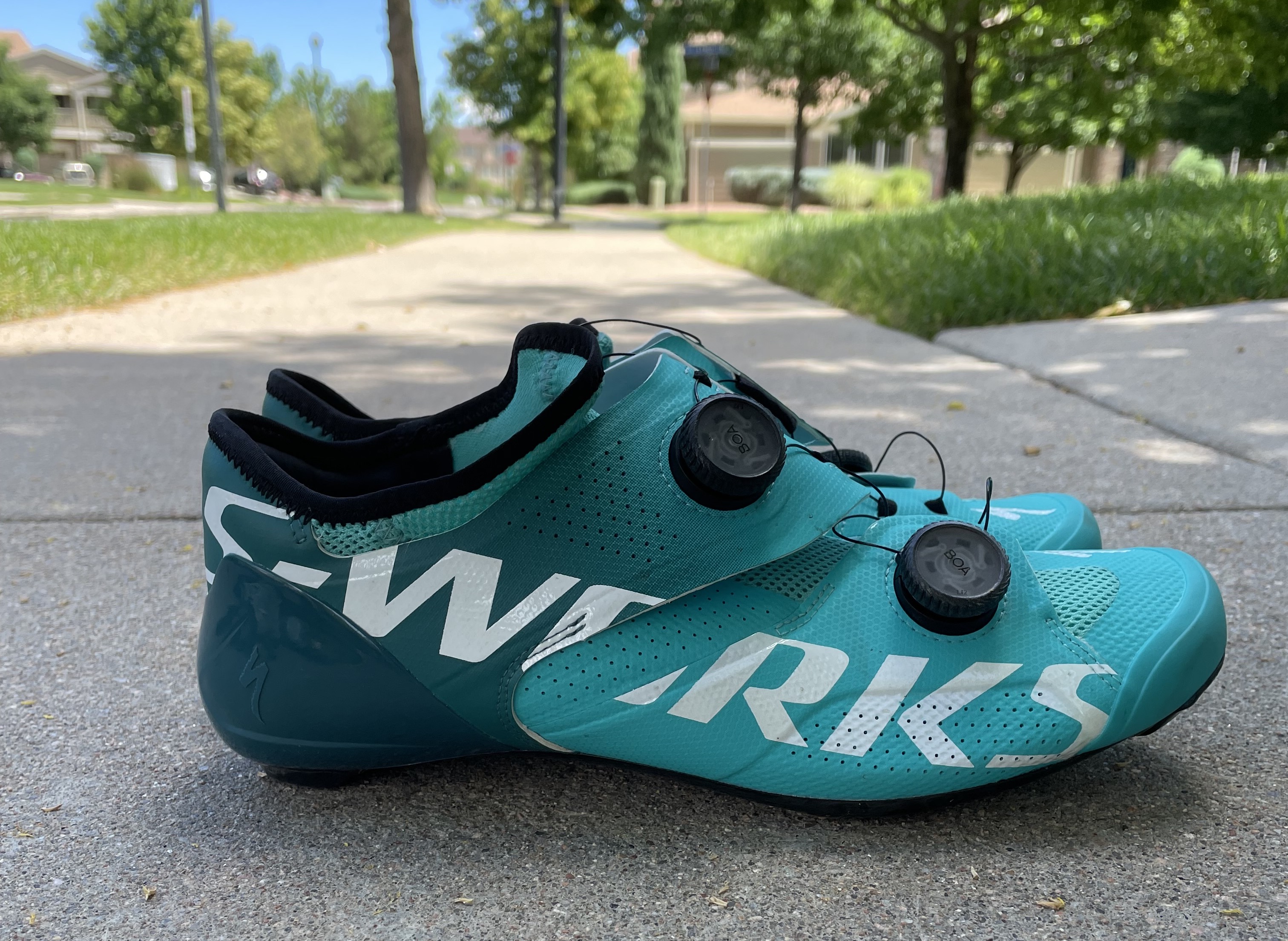
Specialized S-Works Ares triathlon shoes
Specialized S-Works Ares
Our expert review:
Specifications
Reasons to buy
Reasons to avoid
Specialized claims that the S-Works Ares road shoe is “1% faster than any shoe Specialized has ever made." And that's largely due to the shoe being a true road cycling shoe, with next-to-no opportunities for water drainage and just one sole-based vent.
The shoe also takes a few seconds to get on and properly adjust via the two Boa systems on each foot. In a triathlon, precious seconds in transition can make or break a race. It could be a gamble to spend time wiggling a wet foot into these narrow, tight shoes.
On the flipside, though, for triathletes whose strengths lie on the bike (especially over long distances), it could be worth it to sit down, get the Ares fitted, and then smash it on the bike course. The soles have a stiffness of 15 (compared to most tri shoes which have a stiffness of 10), and the power transfer as a result is unmatched by any other shoe we tried in this batch.
The Specialized Body Geometry aspects of the shoe also result in excellent arch, ankle, knee and hip support, keeping the key parts of your body happy across the miles.
This is a shoe where weighing the pros and cons will be unique to each individual and their cycling goals nested within their larger triathlon aspirations.
I think the shoe itself is fabulous but is not perfect for triathlon racers.
Advice
What makes triathlon shoes different than road cycling shoes?
Triathlon shoes are different from cycling shoes for a few reasons. First and foremost, they generally have “vents” across the top, sides, and sole of the shoe. While cycling shoes may have one or two mesh vents in the sole, tri shoes will usually have two to four vents in the sole, a more open top-of-the-foot, and perforated material on the sides. This is to allow for maximum water and sweat drainage as triathletes emerge, dripping, from a swim and must now settle into the bike leg.
Can I use road cycling shoes instead?
Yes, is the simple answer. Using a pair of tried and tested road shoes that you know work well for you and are going to be comfortable is probably a much better bet than going out and buying a new pair of triathlon shoes, particularly for your first few races.
As you progress and hone down your transition times then a dedicated pair of tri shoes will become more advantageous and will help you shave off a few seconds. Tri shoes will also drain and dry much quicker than road shoes, and athletes in warmer countries will also appreciate the extra cooling and ventilation that most tri shoes feature.
Can I use tri shoes on normal road rides?
Again, the short answer is yes, but that extra ventilation won't always be a good idea in cooler weather and the relatively basic fastening systems that tri shoes offer for speed through transition won't be as comfortable or as adjustable as the fastenings on most road shoes.
It also makes good sense not to wear out your race shoes by using them as everyday cycling shoes - save them for the big day.
How we test
As tri shoes need to perform well under a wider set of criteria than road shoes, we put these products through their paces not just on the road, but in the transition as well.
Thus the testing didn't just involve riding lots of miles in them but also encompassed how quick and easy they were to put on with wet feet and remove after a ride, particularly under race pressure.
The latest race content, interviews, features, reviews and expert buying guides, direct to your inbox!

Kristin Jenny is an elite triathlete based near Boulder, Colorado. Although most of her time is spent in aerobars somewhere in the mountains, she finds time to enjoy eating decadent desserts, hiking with her husband and dog, and a good true crime podcast.